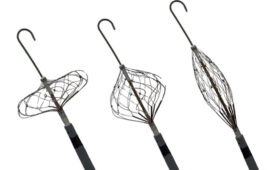Product liability can be company-ending for a medtech business. Here are four key considerations to mitigate the risk.
Ginger Pigott and Michael Goodman, Greenberg Traurig

(Photo by Sebastian Pichler on Unsplash)
Medical device manufacturers have many goals, but central is the ability to improve or extend life, to add value to or improve medical treatment and/or be a benefit to patients.
In our world of litigation and exposure to potential company-ending liability, it is not only good intentions or successful execution of concept that win the day in court. To survive, to innovate and keep valuable products on the market means understanding and using the protections afforded by the regulatory framework and case law interpreting how prescription medical devices are to be treated in tort litigation.
While there are many ways to help mitigate or reduce risk, here are four keys to keep in mind:
Key No. 1: The regulatory pathway to market has an impact on tort claims.
Pathway-to-market decisions often involve a calculus of time versus cost and availability of options. However, the classification of the device and approval versus clearance can make a big difference in how manufacturers are treated if or when they face lawsuits.
Class III devices on the market after successfully navigating the FDA’s rigorous Premarket Approval (“PMA”) process have the most robust defenses to traditional tort claims, such as negligence, strict liability and routine breach of warranty allegations. This is because, by virtue of the approval, the FDA imposes device-specific “additional requirements” that if followed preempt traditional product liability claims. And while plaintiff’s attorneys continue to explore ways to circumvent the dispositive impact of preemption, it is strong leverage to early disposition of legal cases to have PMA.
Class II devices are generally “cleared” by a Premarket Notification (“510(k) clearance”) pathway. (Most Class I devices are exempt from 510(k) clearance, although there are certain registrations and other requirements for this class of devices under FDA regulations.) Devices cleared under a 510(k) use a “substantial equivalence” test comparing to a predicate device to get to market. Since the test does not involve more arduous clinical trial and other requirements of an approval, it is not considered a reflection of the necessary FDA device-specific special controls.
Because they are cleared without device-specific special controls, preemption does not typically apply, and litigation almost always involves great expense and very often the exclusion of some key FDA involvement evidence. But this may be changing.
Recently, the FDA issued a draft guidance expanding the abbreviated 510(k)-clearance pathway. This pathway may tip the scales in favor of preemption for Class II devices. It encourages nonclinical and clinical performance evaluations — as established by the FDA — that provide reasonable assurances of the safety and effectiveness of the particular device as compared to its predicate. These special controls may provide you with access to a preemption defense. Some cost up front may help with legal defense down the road.
Key No. 2: Consider your promotional and warranty language.
Regardless of its regulatory status, what you say about your device will be part of the landscape lawyers consider when evaluating an alleged claim of failure to warn, misrepresentation, breach of express warranty and other claims that rely on what was said or not said.
Here are two examples for consideration: First, express warranties for Class III devices should be precisely tailored to the PMA application. General breach of express warranty claims against a Class III device generally fail for preemption. Making an additional warranty, however, may be stepping away from the protective cloak of preemption. The takeaway here is not to remove express warranties — Class III devices certainly benefit from assuring their devices — but instead ensure that the warranties are strictly tailored to precisely what the FDA reviewed and approved or be willing to abide by these separate promises.
Second, be careful of what your website or other materials say about the characteristics of the device. Not all states will protect you from a claim that such statements are in fact “warranty” language notwithstanding the statements are outside of the express warranty that accompanied your product. Sticking with the words approved or reviewed by the FDA can help legal defenses down the road.
Key No. 3: The duty to warn runs typically to the treating physician — the learned intermediary — so keep it that way.
If you design, manufacture and/or distribute prescription medical devices, you need to direct warnings, instructions and precautions to the physician. The physician bears the responsibility to obtain informed consent, including conveying appropriate warnings. You are not required to warn patients and are generally sheltered from “failure-to-warn the patient” claims. While you may still get a “failure-to-warn” claim about the adequacy of labeling for the physician, those claims are often weak, particularly if you have both clear warnings and physicians who know their business.
But without being careful, direct-to-consumer and online labeling may dilute or even waive a “learned intermediary” defense by touting a medical device’s efficacy without sufficiently warning of the contraindications. However, you can mitigate this risk by including in such communications the verbiage approved by the FDA (if you have PMA) or submitted with your 510(k)-clearance submission. As a rule of thumb, if you are already selling a device, your advertisements or consumer-facing communications should be limited to the (1) device name, (2) FDA-approved or cleared use, and (3) most significant risks of your device.
Key No. 4: Sales teams need to stay ‘on label’ and ‘on message.’
The ways sales employees can affect litigation for your products is significant enough that it deserves a series of articles. For now, we remind you that what your teams are saying and doing in the field is key and what you do about training and discipline for such activities (including compliance with your protocols) is often important. Plaintiffs’ attorneys, facing preemption and other legal defenses to traditional claims, will look to activities of your field personnel to see if anything there might provide a hook to keep a claim in court.
One example for consideration: Off-label use promotions that are truthful descriptions of scientific information have First Amendment protections from FDA enforcement. Regardless, the exposure to legal claims by promoting off-label uses is typically far greater than any gain. Courts are extremely favorable to patients’ product liability claims that can tie off-label promotion to both its off-label use and to injury. It is important to avoid using social media or websites to promote devices for off-label uses. This includes prohibiting employees from “liking” patients’ positive posts describing an off-label use. Requests for off-label information from physicians should be directed to medical affairs where a uniform and considered response can be provided.
There are many ways you can set your company and products up to help mitigate and reduce potential product liability exposure. Thinking about this early and in conjunction with other decisions is a valuable exercise.
Ginger Pigott is a shareholder and vice-chair of Greenberg Traurig’s pharmaceutical, medical device and health care practice, handling high-stakes products liability litigation with an emphasis on the defense of complex medical device and pharmaceutical products.
Michael Goodman is a Greenberg Traurig attorney and registered patent agent advising clients in the medical device, pharmaceutical, biotechnology, consumer products, food and dietary supplement industries on FDA regulatory compliance and product liability.
The opinions expressed in this blog post are the author’s only and do not necessarily reflect those of Medical Design and Outsourcing or its employees.




